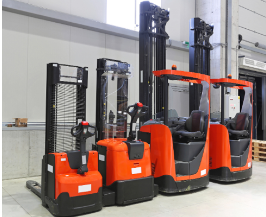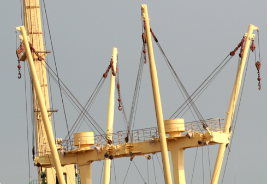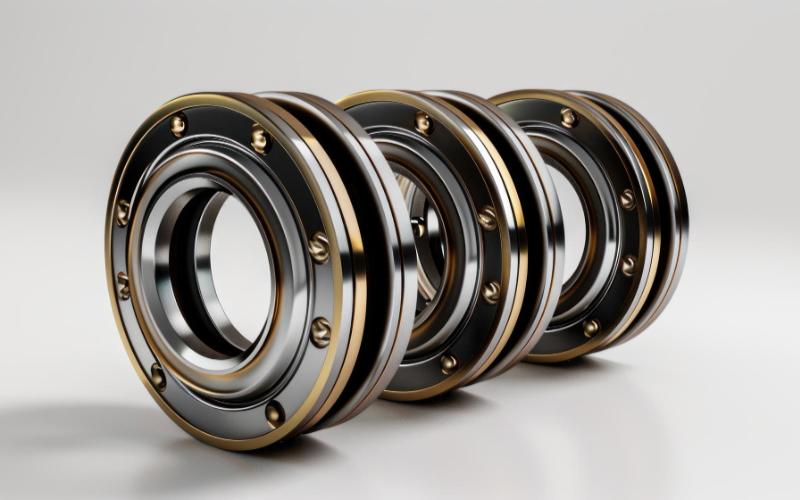Ball bearings are pivotal components in mechanical engineering. These play a crucial role in reducing friction between moving parts. Their significance is particularly pronounced in material handling equipment, where they ensure smooth operation, enhance efficiency, and prolong the lifespan of machinery. This blog delves into the various applications of ball bearings in material handling equipment, shedding light on how these small yet mighty components bear the load in industrial settings.
The Essence of Ball Bearings

Before exploring their applications, let’s understand what ball bearings are. Essentially, they are a type of rolling-element bearing that uses balls to maintain the separation between the bearing races. The primary purpose of a ball bearing is to reduce rotational friction and support radial and axial loads. This simplicity in design and efficiency in operation make ball bearings indispensable in various machinery.
Types of Ball Bearings
- Deep Groove Ball Bearings: The most common type, designed to handle both radial and axial loads. They feature simple design, durability, and versatility, making them suitable for a wide range of applications.
- Angular Contact Ball Bearings: Designed to handle both radial and axial loads, these bearings are ideal for applications requiring high precision and rigidity. They can withstand significant axial loads in one direction and are commonly used in machine tools and high-speed applications.
- Self-aligning Ball Bearings: These bearings have two rows of balls and a common sphere raceway in the outer ring, allowing them to accommodate misalignment. They are suitable for applications where shaft and housing misalignment might occur.
- Thrust Ball Bearings: Designed specifically to handle axial loads, these bearings are used in applications with high axial loads but low to moderate radial loads. They consist of two washer-like rings with grooves for the balls.
- Miniature Ball Bearings: These are small and used in applications with limited space, like precision instruments, small motors, and robotic systems. Despite their size, they can be incredibly precise and efficient.
Each type is engineered to meet specific operational needs, ensuring machinery runs smoothly and efficiently while reducing friction and wear.
Ball Bearing Uses in Material Handling Equipment

Conveyor Systems
One of the most common applications of ball bearings is in conveyor systems. These systems are the lifeline of numerous industries, facilitating the movement of materials from one point to another.
Ball bearings are used in the rollers of conveyor belts to ensure smooth motion, reduce energy consumption, and minimize wear and tear.

Forklifts
Forklifts are another critical piece of material handling equipment that relies heavily on ball bearings. They are used in the wheels, transmission systems, and steering mechanisms of forklifts. The bearings ensure that these vehicles can maneuver heavy loads with ease and precision, enhancing safety and productivity in warehouses and construction sites.

Cranes and Hoists
In cranes and hoists, ball bearings play a vital role in the rotation of the boom, the winding of the cable, and the movement of the hook. They ensure that these components operate smoothly and reliably, which is crucial for lifting heavy materials safely and efficiently.

Automated Storage and Retrieval Systems
Automated storage and retrieval systems (ASRS) are becoming increasingly popular in modern warehouses. Ball bearings are used in the various moving parts of these systems, including the vertical and horizontal movers.
They ensure that these systems can retrieve and store items quickly and accurately, optimizing space utilization and reducing operational costs.
The Impact of Ball Bearings on Efficiency and Longevity
The use of ball bearings in material handling equipment significantly enhances efficiency by reducing energy consumption and increasing the speed of operations. Moreover, they extend the lifespan of machinery by minimizing wear and tear, leading to reduced maintenance costs and downtime.
Supremacy of KG India in bearing market
At KG India, we understand the critical role that ball bearings play in material handling equipment. Our extensive range of high-quality ball bearings is designed to meet the diverse needs of the industry, ensuring reliability, durability, and performance. Whether you’re looking to enhance the efficiency of your conveyor systems, forklifts, cranes, or any other material handling equipment, KG India has the right solution for you. Explore our offerings at www.kgindia.co.in and discover how we can help you bear the load with ease and efficiency.
Conclusion
Ball bearings are indispensable components in material handling equipment, ensuring smooth operation, enhancing efficiency, and prolonging the lifespan of machinery. Their applications in conveyor systems, forklifts, cranes, and automated storage systems highlight their versatility and importance in the industrial sector. As industries continue to evolve, the role of ball bearings in material handling equipment will remain crucial, underscoring the need for high-quality bearings like those offered by KG India.


